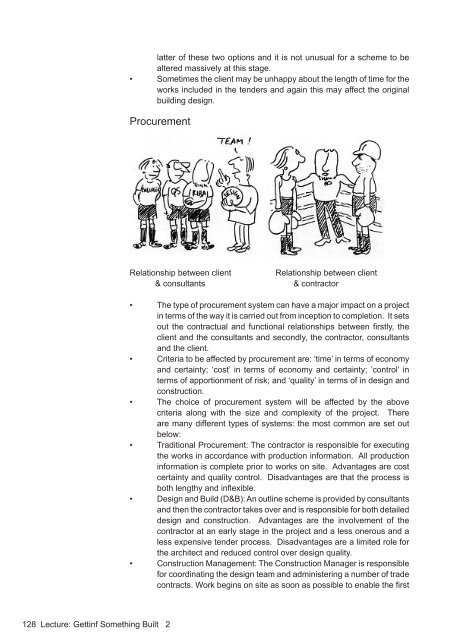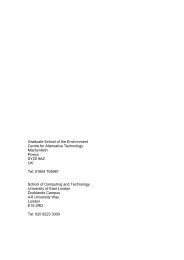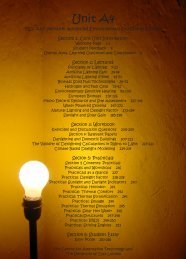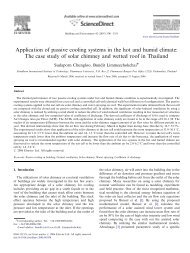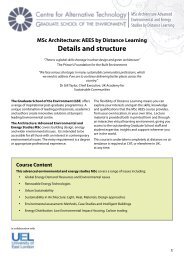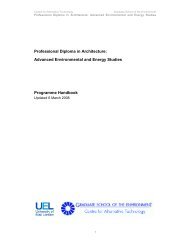Module B1 Study Book - the Graduate School of the Environment
Module B1 Study Book - the Graduate School of the Environment
Module B1 Study Book - the Graduate School of the Environment
You also want an ePaper? Increase the reach of your titles
YUMPU automatically turns print PDFs into web optimized ePapers that Google loves.
latter <strong>of</strong> <strong>the</strong>se two options and it is not unusual for a scheme to be<br />
altered massively at this stage.<br />
• Sometimes <strong>the</strong> client may be unhappy about <strong>the</strong> length <strong>of</strong> time for <strong>the</strong><br />
works included in <strong>the</strong> tenders and again this may affect <strong>the</strong> original<br />
building design.<br />
Procurement<br />
Relationship between client<br />
& consultants<br />
Relationship between client<br />
& contractor<br />
• The type <strong>of</strong> procurement system can have a major impact on a project<br />
in terms <strong>of</strong> <strong>the</strong> way it is carried out from inception to completion. It sets<br />
out <strong>the</strong> contractual and functional relationships between firstly, <strong>the</strong><br />
client and <strong>the</strong> consultants and secondly, <strong>the</strong> contractor, consultants<br />
and <strong>the</strong> client.<br />
• Criteria to be affected by procurement are: ‘time’ in terms <strong>of</strong> economy<br />
and certainty; ‘cost’ in terms <strong>of</strong> economy and certainty; ‘control’ in<br />
terms <strong>of</strong> apportionment <strong>of</strong> risk; and ‘quality’ in terms <strong>of</strong> in design and<br />
construction.<br />
• The choice <strong>of</strong> procurement system will be affected by <strong>the</strong> above<br />
criteria along with <strong>the</strong> size and complexity <strong>of</strong> <strong>the</strong> project. There<br />
are many different types <strong>of</strong> systems: <strong>the</strong> most common are set out<br />
below:<br />
• Traditional Procurement: The contractor is responsible for executing<br />
<strong>the</strong> works in accordance with production information. All production<br />
information is complete prior to works on site. Advantages are cost<br />
certainty and quality control. Disadvantages are that <strong>the</strong> process is<br />
both lengthy and inflexible.<br />
• Design and Build (D&B): An outline scheme is provided by consultants<br />
and <strong>the</strong>n <strong>the</strong> contractor takes over and is responsible for both detailed<br />
design and construction. Advantages are <strong>the</strong> involvement <strong>of</strong> <strong>the</strong><br />
contractor at an early stage in <strong>the</strong> project and a less onerous and a<br />
less expensive tender process. Disadvantages are a limited role for<br />
<strong>the</strong> architect and reduced control over design quality.<br />
• Construction Management: The Construction Manager is responsible<br />
for coordinating <strong>the</strong> design team and administering a number <strong>of</strong> trade<br />
contracts. Work begins on site as soon as possible to enable <strong>the</strong> first<br />
128 Lecture: Gettinf Something Built 2


